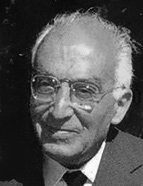

In the year he completed his undergraduate thesis (1947), SDA was commissioned by Torquato de Sousa Soares to catalogue the historical texts published between 1939 and 1945 in the following fields: Sources and Auxiliary Sciences of History, General and Political History, Economic History , and Local History. Torquato de Sousa Soares, a very influential figure in the History group, showed in published articles a particular appreciation for Marc Bloch, an author who had fought for a renewal of History. However, the gap was not wide enough to allow SDA to prepare his undergraduate and doctoral theses in the field of Local and Regional History, a topic in which he had already published extensively. Only in the 1960s would, in the words of António de Oliveira, ‘Local history enter university on a firm footing, becoming a work of love for science and not just for one ’ s birthplace’ (Oliveira, 2010, p. 44). Out of love for scientific methodology, learnt in the medical course and in the textbooks on the auxiliary sciences of History, SDA had already written, in 1939, the exhaustive and well-grounded study Ladeia e Ladera: subsídios para o estudo do feito de Ourique , [Ladeia and Ladera: subsidies for the study of the feat of Ourique] which can be considered a real training ground for the preparation of later works.
The works prepared by SDA for academic examinations can be considered ‘treatises’ on applied critical methodology. In the author ’ s own words, the book A Batalha de Trancoso [The battle of Trancoso] could have been subtitled Essay on the historical value of Fernão Lopes . In fact, the chronicler ’ s writings were subjected to close internal and external criticism and an insightful historical and philological interpretation. This critical method involved cross-referencing the text of Fernão Lopes with the chronicles of Froissart and Ayala, as well as with other coeval documents. The shrewd ‘dissection’ of the sources, expressed in an impressive critical apparatus and in the transcription of documents, allowed the author to put forward an approximate date for the Battle of Trancoso: ‘The Battle of Trancoso took place in 1385 between 6 May and 8 June, more precisely: at the end of May or beginning of June (before the 8 th ); probably on one of the first days of June’. He also showed that the Battle of Trancoso was not a simple episode but the final part of ‘a real campaign’ that would end in Aljubarrota.
This work is financed by national funds through FCT - Foundation for Science and Technology, I.P, in the scope of the projects UIDB/04311/2020 and UIDP/04311/2020.
